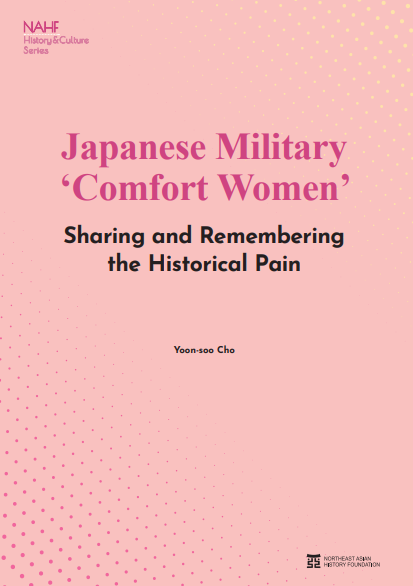Publication
- Date2024.05.20
- Hit383
This book is an English translation of 《일본군‘위안부’》(2019, Northeast Asian History Foundation). The youth of the victims of Japanese military 'comfort women' were thoroughly destroyed by the Japanese military. When thinking about those days, the anger and resentment are unbearable, and efforts were made to erase them from memory and heart, but the wounds never disappeared. The issue of Japanese military 'comfort women' is not an old historical matter between Korea and Japan but a current and future issue of women's human rights. The "Statue of Peace" has an empty chair. This chair is for all the victims who have passed away or remain unrecognized. At the same time, it is also a seat for all those who strive to prevent such a tragedy from happening again. I hope this book helps to fill that empty chair and brings a bit of healing to the hearts of all the victims.
Contents | ||
Publisher’s Note Preface Introduction Chapter 1 The Hidden Truth Unveiled by the Victims’ Courage 1-1. Breaking the Silence: “I was a Japanese Military ‘Comfort Woman.’” 1-2. Testifying to the Truth
Chapter 2 Japan’s Invasion War and the Japanese Military ‘Comfort Women’ System 2-1. Fraudulent Recruitment and Forced Mobilization: The Involvement of the Japanese Government and Military in Illegal Activities 2-2. Comfort Stations Established and Managed by the Japanese Military 2-3. Unimaginable Abuses and Inhumane Treatment of Women in Comfort Stations 2-4. The Japanese Military Sexual Slavery System: Why Comfort Stations?
Chapter 3 How Did the Korean and Japanese Governments Respond? 3-1. Both Countries Stuck in the 1990s: Fact-Finding and Reconciliation Incomplete 3-2. Two Crucial Incidents in 2011 and 2015: A Constitutional Court Decision and a Korea-Japan Agreement
Chapter 4 How Did the Global Community Respond? 4-1. Universal Values: The Issues of Sexual Slavery and Forced Mobilization 4-2. Japan’s Denial and the Global Reaction Epilogue: Sharing and Remembering the Courage and Pain of the Victims
Chronology of the Japanese Military ‘Comfort Women’ Issue Bibliography Index |
- No Data.

